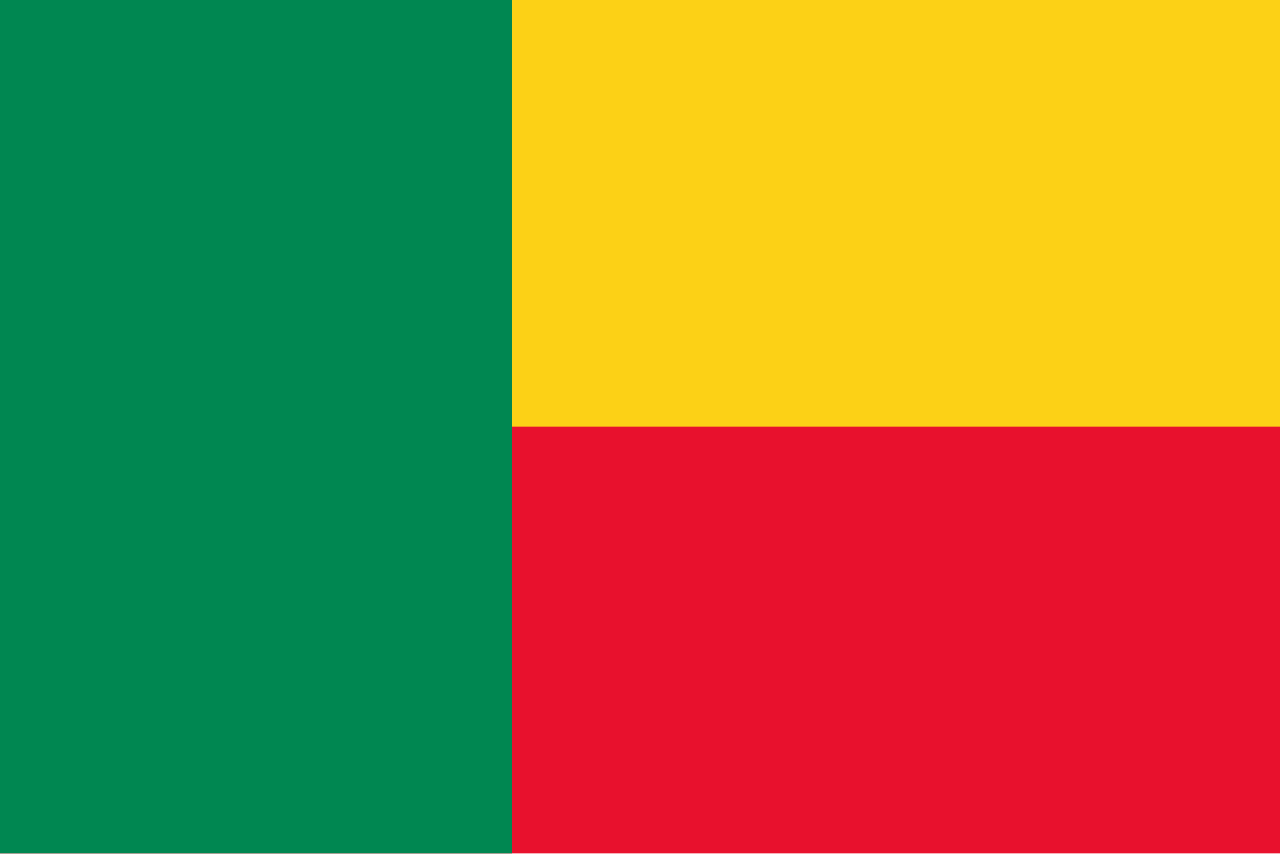The flag of Benin is a simple yet meaningful design that was officially adopted on November 16, 1959, just before the country gained independence from France on August 1, 1960. The flag was briefly replaced during the Marxist-Leninist regime (1975-1990) but was restored after the return to democracy in 1990.
Design and Elements
- Colors: The flag consists of three stripes: two horizontal stripes (yellow and red) on the right and one vertical stripe (green) on the left.
- Layout:
- The green stripe is positioned vertically on the hoist side of the flag.
- The yellow stripe is at the top of the flag horizontally.
- The red stripe is placed horizontally below the yellow stripe.
Symbolism
- Green: Represents hope, revival, and the lush vegetation of the country.
- Yellow: Symbolizes the country’s wealth, optimism, and the bright future of its people.
- Red: Stands for the courage and strength of the ancestors, as well as the struggle for independence.
Proportions
- The flag has a ratio of 2:3, which is common among many national flags.
Historical Context
- The flag was first adopted in 1959 when Benin was still known as Dahomey, a name that was changed after the country’s independence.
- During the Marxist regime from 1975 to 1990, the flag was replaced with a green banner featuring a red star in the top left corner, representing socialism. After the regime ended, the original tricolor flag was reinstated to symbolize the return to democratic values.
The flag of Benin, with its vibrant colors, reflects the nation’s pride, historical struggles, and hopes for prosperity and growth. Its simple design carries a deep meaning that resonates with the identity and aspirations of the Beninese people.
